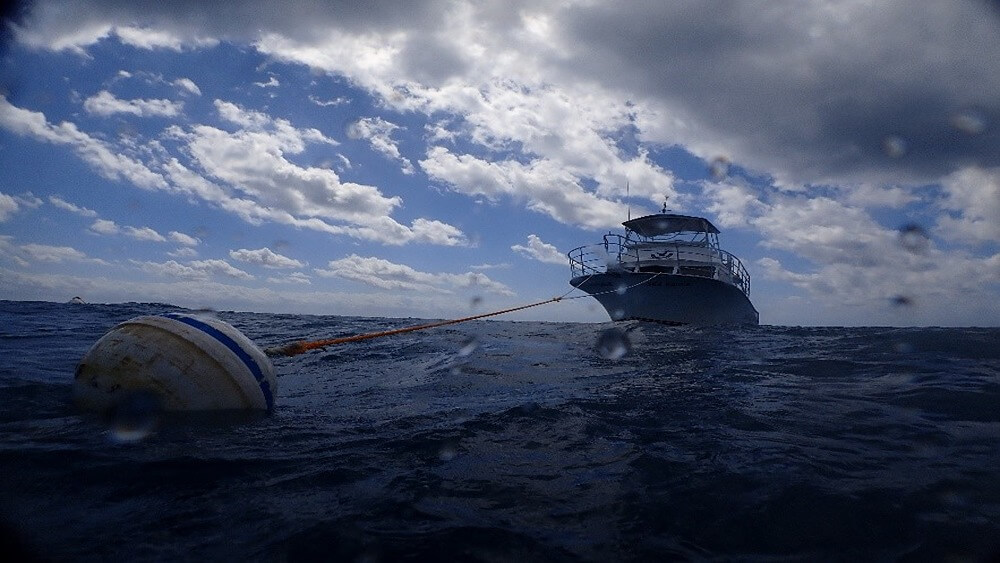Marine Zone Effectiveness
Conservation Issue
Florida Keys National Marine Sanctuary (FKNMS) first established a network of marine protected areas in 1997, consisting of five different types of zones, each with different types of protection. A multi-year zoning and regulatory review has been completed and new measures have been proposed. In order to understand whether existing protected areas and proposed zoning and boundary modifications and/or new zones and regulations effectively mitigate stressors and contribute to recovery, new research and targeted monitoring is needed.

Description
There are five types of marine zones within FKNMS: wildlife management areas, ecological reserves, sanctuary preservation areas, special use (research only) areas, and existing management areas. Each individual zone encompasses a discrete, biologically important area, and individually they may: 1) reduce user conflicts and sustain critical marine species and habitats (sanctuary preservation areas); 2) encompass large, contiguous, diverse habitats in order to protect and enhance natural spawning, nursery, and permanent-residence areas for the replenishment and genetic protection of fish and motile invertebrates (ecological reserves); 3) set aside areas for research and education, or for the recovery or restoration of injured or degraded resources (special use areas); 4) minimize disturbance to especially sensitive or endangered wildlife and their habitats, such as bird nesting, resting, or feeding areas plus turtle nesting beaches, while providing for public use (wildlife management areas); and 5) include resource management areas established prior to the 1996 sanctuary management plan (existing management areas).
After five years of marine zoning, 24 fully protected zones were found to support larger and more abundant populations of lobster and commercially and recreationally important fish species when compared to similar non-protected habitats. Over a longer term (20 years), the protected areas had higher reef fish abundance and biodiversity, but the differences between protected and unprotected areas decreased over time, possibly due to emigration and spillover associated with storms and variations due to habitat type and condition of these habitats. Similar trends have been observed for corals, with both protected and non-protected offshore locations showing large declines in coral cover and abundance; some of the best remaining coral resources are found in high-relief habitats and more resilient nearshore or midchannel non-protected sites.
Given the confounding results of the benefits of protection, along with the identification of new locations that would benefit from protection (e.g., spawning aggregations; nursery habitats; and resilient deep-water, nearshore, and midchannel habitats that may serve as refugia for Endangered Species Act–listed corals and other key reef-building corals), there is a key need to evaluate the effects of zoning as a means to manage and preserve resources and determine if zone types and associated regulations are producing the expected results for the resource and the user groups affected by the associated protection strategy.
Data and Analysis Needs
- Assessment of the network of protected areas in the Florida Keys to determine whether there is adequate representation of different habitat types and connectivity between those habitats
- Assessment of existing protected areas to determine whether they are large enough to protect and maintain ecological processes (e.g., nutrient flows and food web interactions) and support all key life stages of ecologically and commercially important species and their movement patterns
- Spatiotemporal influence of currents, eddies, and water movements within the sanctuary and appropriate spacing and size of protected zones relative to larval dispersal patterns and the exchange of gametes, larvae, juveniles, and adults among zones
- Status and trends of benthic resources and motile fish and invertebrates within protected areas versus unprotected areas, and assessment of protected areas to determine whether they are adequate to protect fish spawning aggregations, nursery grounds, and source populations of larger, older individuals of greater reproductive capacity during critical time periods in their life history
- Benthic habitat condition, diversity, abundance, and patterns of recovery of resources within protected areas compared to similar, non-protected areas
- Assessment of regulatory measures within protected areas to determine whether they are adequate to prevent injury to benthic resources and whether the extent of impacts (e.g., from vessels, divers) is lower within a protected area compared to a similar, non-protected area
- Influence of protected areas on the distribution of extractive uses, corresponding impacts to natural resource populations, and how that may integrate with predator-prey interactions both in and outside protected areas
- Additional areas that would benefit most from new spatial or temporal zoning measures, including the needs for and benefits from large contiguous areas
Potential Products
- New/revised monitoring methods to evaluate management effectiveness
- Mosaic imagery, videos (e.g., from autonomous underwater vehicles), and expanded and updated story maps for Mission: Iconic Reefs sites
- Graphics that illustrate success rates
- One-pagers on effectiveness of marine zones for key indicator species
- Citizen scientist programs and outreach
- Research results that inform and persuade management decisions
- Interactive maps of human use, biophysical resources, and heritage resources
- Inventory and monitoring approach for intangible cultural heritage
For more information about this assessment, contact Andy.Bruckner@noaa.gov.

